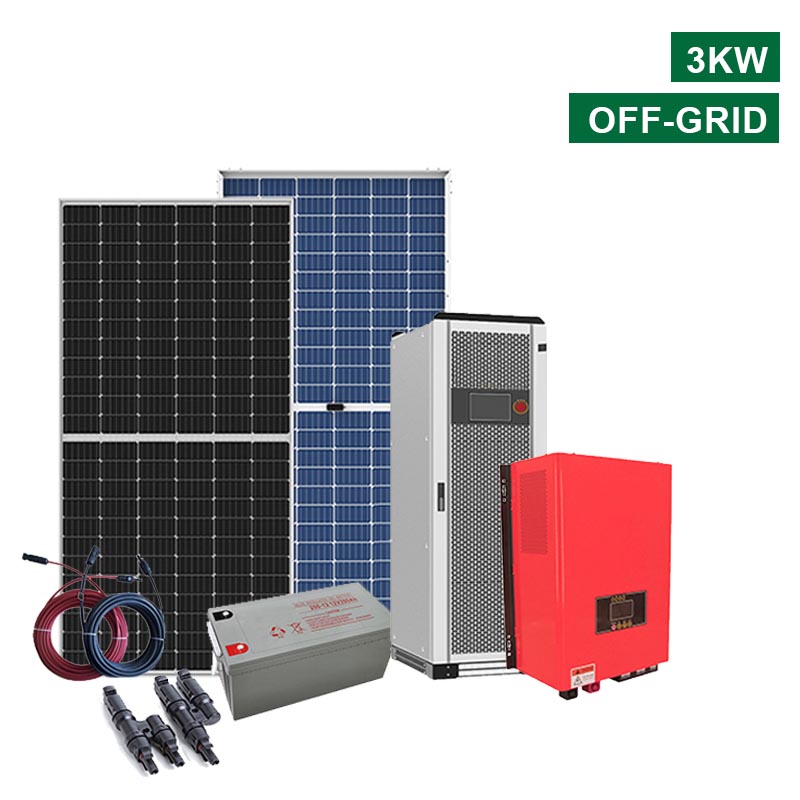How to choose a solar inverter for industrial and commercial photovoltaic power plants?
 Apr 28,2022
Apr 28,2022

 Rekesun
Rekesun
More and more companies have begun to build industrial and commercial photovoltaic power plants, starting from the benefits of commercial operations, and also contributing to low-carbon environmental protection. As the core equipment of photovoltaic system, the choice of solar inverter directly determines the benefit of photovoltaic system. So, how to choose a solar inverter for industrial and commercial photovoltaic power plants?

Power generation efficiency, power generation configuration, intelligent protection, quality, and grid friendliness are the five important considerations for the selection of solar inverters for industrial and commercial photovoltaic power plants.
1. Power Generation Efficiency
In terms of efficiency, in addition to looking at the efficiency parameters of the solar inverter (maximum efficiency, MPPT efficiency), the following aspects need to be paid more attention, which will directly affect the power generation efficiency.
Number of MPPT channels
Under the same input power, the number of solar inverter MPPT circuits affects the power generation of a photovoltaic power station, especially when the power station has problems such as shadow shading, different component orientations, and inconsistent component performance. Attenuation), the more MPPT channels, the higher the tracking accuracy of the MPPT single channel, the fast dynamic response speed, the ability to adapt to the rapid changes in light, and increase the power generation.
DC voltage operating range
The lower the lower limit of the operating voltage range of the solar inverter, the earlier the solar inverter starts and the later the shutdown, the longer the daily power generation time and the higher the power generation. The higher the upper limit of the operating voltage range, it means that the solar inverter can withstand higher voltages without reporting PV overvoltage errors when the component voltage is higher at low temperatures, resulting in more stable operation and more efficient power generation.
2. Power generation configuration
The configuration of solar inverters and photovoltaic modules also affects power generation efficiency and station construction costs to a certain extent.
Adapt to high-power components
With the launch of ultra-high-power modules one after another, high-power modules have become a market trend. If only the power of the modules increases, the power of the solar inverters does not match, and the electricity generated by the modules will be wasted. If only the power of the solar inverter is increased, and the power of the components is not increased, the amount of DC cables will definitely increase, and the DC loss will also increase. Therefore, choosing a photovoltaic solar inverter suitable for high-power components is a choice that benefits both power generation efficiency and cost.
Overmatch & Overload
Allocating the total capacity of PV modules to be larger than that of solar inverters is called over-provisioning. Due to the attenuation of component power, line loss, system loss, dust shielding, and the difference in illumination in different regions, the use of appropriate over-provisioning can improve the overall revenue of the power station system. The overload capacity of the solar inverter can effectively reduce the light rejection rate and prolong the working time of the machine at full power, and expand the over-provisioning ratio of components.
Therefore, the over-distribution and overload capacity of solar inverters have also become important reference indicators for the selection of photovoltaic solar inverters in industrial and commercial photovoltaic power plants.
3. Intelligent protection
Since solar inverters are mostly installed outdoors, in addition to basic protection functions such as IP protection level, AC and DC secondary lightning protection, island protection, insulation fault detection, and leakage current detection, there are several other functions that must be understood:
Smart IV Diagnosis
It can precisely locate string faults and proactively find problems. With multiple guarantees and stable operation of the power station, users can truly feel at ease.
fault recorder
Observe and record the AC side voltage and current waveforms of solar inverters in real time to quickly locate problems.
In addition to multiple safety protections, it is equipped with an intelligent monitoring and management platform, which can monitor the power station with mobile phones and computers, and can check the operation data of the power station at any time and know the status of the power station in time. At the same time, rekesun solar factory can find problems through remote diagnosis, analyze the causes of failures, provide solutions, and solve problems remotely in a timely manner.



 Home
Home Photovoltaic and energy storage industry - solar power inverter
Photovoltaic and energy storage industry - solar power inverter 







 syplighting.en.alibaba.com
syplighting.en.alibaba.com



